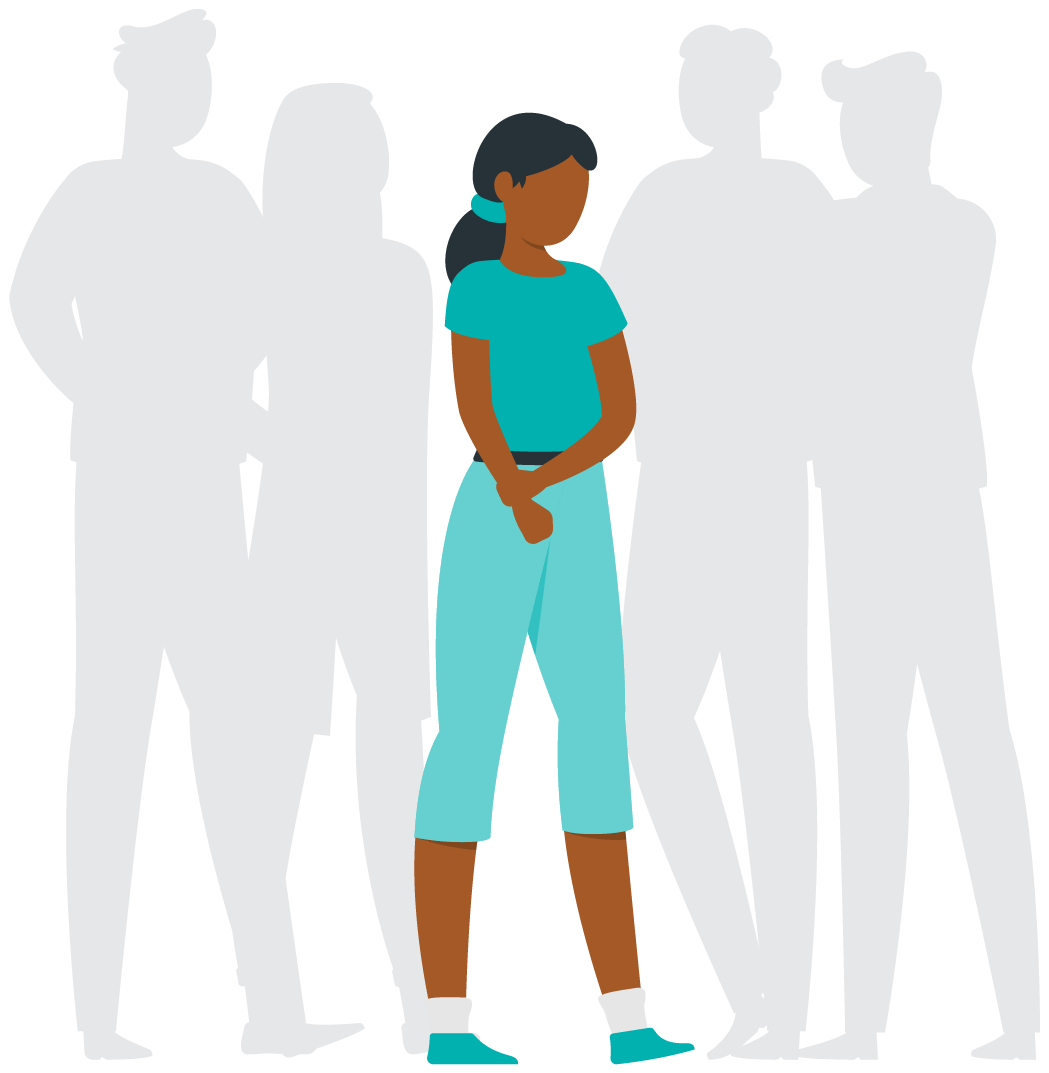Exclusion
 One of the things that current and past policies related to post-secondary education have done is to exclude students from equity-deserving groups and make them feel unwelcome. These acts of exclusion can harm the mental health of students because they play into the narrative that they are not welcome on campus and have no place there. When we exclude students, intentionally or unintentionally, we also neglect their mental health needs and are unable to provide programs and services to meet them where they are at. Below are a few instances of exclusion that have happened to various equity-deserving groups on post-secondary campuses (note: the below sections are not exhaustive of all excluded groups).
One of the things that current and past policies related to post-secondary education have done is to exclude students from equity-deserving groups and make them feel unwelcome. These acts of exclusion can harm the mental health of students because they play into the narrative that they are not welcome on campus and have no place there. When we exclude students, intentionally or unintentionally, we also neglect their mental health needs and are unable to provide programs and services to meet them where they are at. Below are a few instances of exclusion that have happened to various equity-deserving groups on post-secondary campuses (note: the below sections are not exhaustive of all excluded groups).
Indigenous Exclusion
Indigenous students were originally excluded from colleges and universities when they first began to be established in Canada. One of the few exceptions were religious colleges and universities. These schools hoped to recruit small numbers of Indigenous students in order to teach them the tenets of Christianity so that they may return to their home communities to proselytize and convert other Indigenous people to Christianity (Wilder, 2013). In 1982, Indigenous people’s right to attend post- secondary education was enshrined as a constitutional right through the Canadian Constitution Act (Canadian Federation of Students, 2021) Funding is now provided for Indigenous education through the Post-Secondary Student Support Program (PSSSP) and the University and College Entrance Preparation Program (UCEPP) (Canadian Federation of Students, 2021). However, these programs are not perfect. They are underfunded, difficult to access, and Métis people are not eligible to access them. Though some progress has been made, it is not enough to close the gaps that exist. Even today, many Indigenous students must travel far from their reservations or home communities in order to attend post- secondary education because of the lack of institutions closer to home. This forces them to leave behind a support system that affirms their cultural identity, which could negatively impact their mental health. The recommendations from Canada’s Truth and Reconciliation Committee (see ‘What Can We Do Now?’ for more information) are a starting point that post-secondary institutions can build on to ensure the just inclusion of Indigenous students.
Exclusion of Black People
From the time of slavery until the early 20th century, Black people were excluded from post-secondary education in one form or another. During the time of slavery, they only participated on post-secondary campuses in their capacity as enslaved people, providing manual and domestic services to staff and students (Wilder, 2013). In the 1900s many Canadian post-secondary institutions, Including McGill, Dalhousie, Queens, and the University of Toronto excluded Black students from their medical and nursing schools (Henry, 2021). Black students were excluded from law schools as well (Smith, 2004). In present times, acts of racism such as racist posts in student group chats and the use of harmful language in the classroom, continue to exclude Black students from a campus experience that has positive impacts on their mental health (Burke et al., 2021; CBC News, 2021; Rodriguez, 2019).
2SLGBTQ+ Exclusion
2SLGBTQ+ students and staff have also had a fraught history with colleges and university. During the 1960s in the United States, students who were suspected of being in same-sex relationships were questioned and expelled from the university (CITE (Gerard, 2021)). Those who had the chance to remain on campus were forced into psychological treatment (Gerard, 2021). In 1991, Delwin Vriend, a lab instructor at King’s College University in Edmonton was fired from his job for being gay (CBC News, 2012). His case ended up going all the way to the Supreme Court where it was found that his exclusion from his job violated the Charter of Rights and Freedoms (CITE (Simons, 2018)). For information on the mental health of queer students on campus, please see CICMH’s Invisible Intersection toolkit.
Exclusion of Disabled People
In the 18th and 19th centuries, disabled people we mainly excluded from education and instead institutionalized (BC Disability, n.d.). It was not until the late 1900s that we began to even think about the particular needs of disabled students and only in 2010 did Canada ratify Article 24 of the UN Convention on the Rights of People with Disabilities, which plainly states that disabled people have a right to education (BC Disability, n.d.; United Nations Department of Economic and Social Affairs, n.d.). Despite this article, we still have gaps that create barriers for disabled students to participate fully in post-secondary education. Issues like a lack of services and funding, as well as barriers to supports and accommodations mean that disabled students still do not have equitable access to post secondary education ((Canadian Human Rights Commission, 2017).

